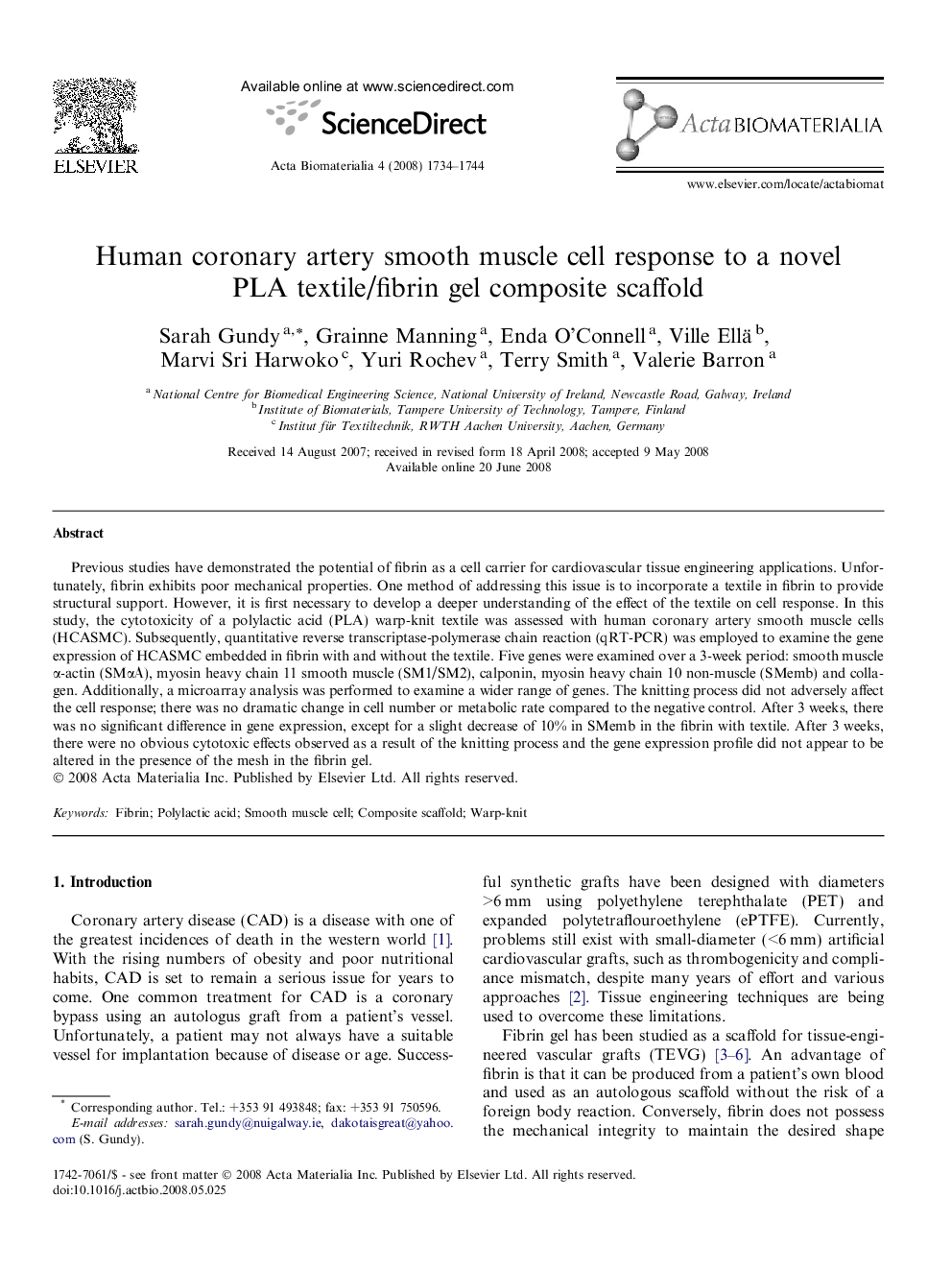| Article ID | Journal | Published Year | Pages | File Type |
|---|---|---|---|---|
| 1746 | Acta Biomaterialia | 2008 | 11 Pages |
Previous studies have demonstrated the potential of fibrin as a cell carrier for cardiovascular tissue engineering applications. Unfortunately, fibrin exhibits poor mechanical properties. One method of addressing this issue is to incorporate a textile in fibrin to provide structural support. However, it is first necessary to develop a deeper understanding of the effect of the textile on cell response. In this study, the cytotoxicity of a polylactic acid (PLA) warp-knit textile was assessed with human coronary artery smooth muscle cells (HCASMC). Subsequently, quantitative reverse transcriptase-polymerase chain reaction (qRT-PCR) was employed to examine the gene expression of HCASMC embedded in fibrin with and without the textile. Five genes were examined over a 3-week period: smooth muscle α-actin (SMαΑ), myosin heavy chain 11 smooth muscle (SM1/SM2), calponin, myosin heavy chain 10 non-muscle (SMemb) and collagen. Additionally, a microarray analysis was performed to examine a wider range of genes. The knitting process did not adversely affect the cell response; there was no dramatic change in cell number or metabolic rate compared to the negative control. After 3 weeks, there was no significant difference in gene expression, except for a slight decrease of 10% in SMemb in the fibrin with textile. After 3 weeks, there were no obvious cytotoxic effects observed as a result of the knitting process and the gene expression profile did not appear to be altered in the presence of the mesh in the fibrin gel.
